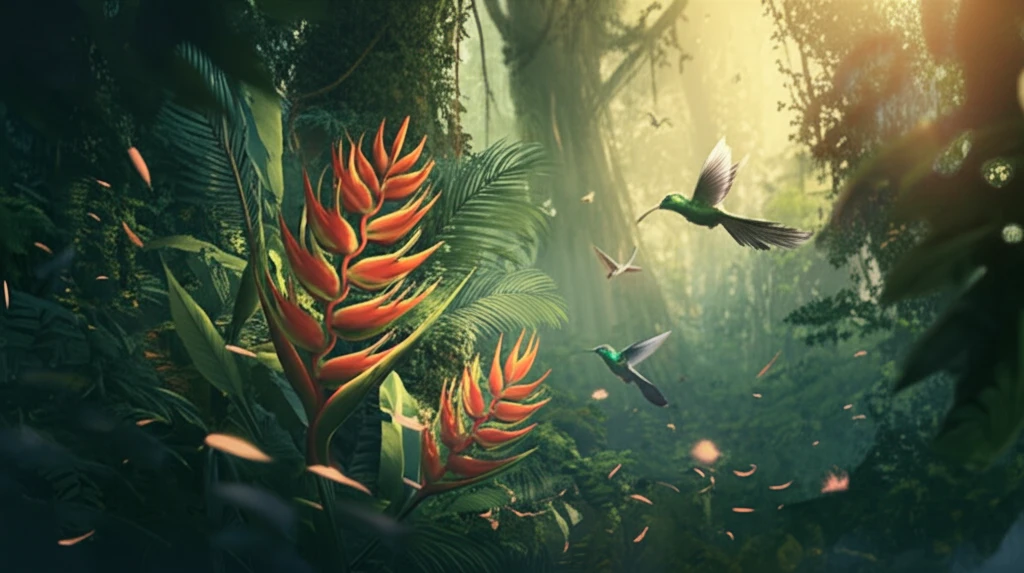
Decoding Nature's Signals: How Flower Clusters Boost Hummingbird Visits
"Uncover the secrets of Heliconia bihai: a study revealing how flower arrangements maximize pollination efficiency."
In the intricate dance of nature, spatial arrangement plays a crucial role in how plants interact with their environment. For flowering plants, the distribution of blossoms can significantly influence their attractiveness to pollinators. Clustering, in particular, is a strategy where plants group their flowers tightly together, creating visually appealing patches that can be irresistible to nectar-seeking animals. The assumption is simple: a larger, more conspicuous display is more likely to catch the eye—or wing—of a passing pollinator.
Heliconia bihai, a vibrant tropical plant, showcases this clustering phenomenon beautifully. Native to the Neotropics, this species often forms dense groupings of brightly colored flowers, which act as beacons for hummingbirds. These avian visitors are vital to the plant's reproductive success, transferring pollen from flower to flower as they feed on nectar. The size and density of these floral clusters might directly affect how often hummingbirds visit and, consequently, how many fruits the plants produce.
A recent study delved into this relationship, testing whether the size of Heliconia bihai inflorescence clusters influences hummingbird visitation rates and fruit production. Conducted in a lush section of the Atlantic Forest near Rio de Janeiro, Brazil, the research provides valuable insights into the ecological dynamics between plants and their pollinators. Understanding these relationships is crucial not only for conservation efforts but also for informing garden designs that maximize biodiversity.
How Do Flower Clusters Influence Pollination Rates?

The study, conducted between December 2012 and April 2013, meticulously monitored 23 distinct clusters of Heliconia bihai. Located near the Pedra Branca State Park in Vargem Grande, Rio de Janeiro, these clusters varied in size, offering a natural experimental setup. The researchers carefully tracked the number of inflorescences (flower groupings) within each cluster and the subsequent fruit production per inflorescence. Identification of plant species was carried out using established botanical literature, ensuring accuracy in the data collected.
- Positive Impact on Visitation: The study found that larger clusters of Heliconia bihai attracted more hummingbird visits.
- Negative Impact on Fruit Production: However, fruit production per inflorescence decreased as the cluster size increased.
- Species-Specific Effects: Eupetomena macroura showed a particular affinity for larger clusters.
Balancing Act: Attracting Pollinators Without Sacrificing Fruit
This research highlights the intricate balancing act plants face in their reproductive strategies. While attracting pollinators is essential, the size and density of floral displays can have complex and sometimes counterintuitive effects on fruit production. For Heliconia bihai, forming large clusters might increase visibility and draw in more hummingbirds, but it also seems to reduce the efficiency of pollination for individual flowers. Future studies could explore whether this trade-off leads to a higher overall genetic diversity within the plant population, as increased pollinator visits might promote greater pollen flow between plants.
